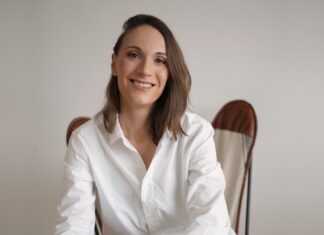Minimising false declines and optimising subscription billing
Please introduce yourself and your startup Revolv3 to our readers?
I’m Frank Arellano, founder and CEO of Revolv3, a fintech SaaS platform based in Laguna Beach, CA. I’m a versatile, top-tier techno-commercial executive with 20+ years of experience including, strategy, technology, business operations, client relationships, providing executive leadership and elevating the business to market leadership. I’m passionate about blending visionary insight and sharp business planning skills for strategizing global change initiatives and turnaround management. Being involved in creating and sustaining a dynamic work environment that fosters development opportunities and that motivates high performance amongst team members has been the key highlight thus far.
Before founding Revolv3, some of my career highlights include serving in a key leadership role at Experian Consumer Services, most recently as Vice President of Business Operations. Prior to Experian, I worked with Ingram Micro for 16 years, lastly as Snr Director of Corporate Development & Strategy. I’ve also successfully delivered turnaround of operations for 300+ B2C and B2B e-Commerce sites and strategically led a multi-billion dollar acquisition integration program, and established a global technology management office.
I founded Revolv3 in 2020, as a full stack SaaS payment orchestration and optimization platform for subscription billing that utilises adaptive technology to deliver the industry’s highest credit card acceptance rates. Our seamless integration enables merchants to instantly achieve transformational revenue growth and superior customer retention at the lowest cost in the industry. We support our clients in achieving a frictionless transaction approval process. Since we want to reduce card processing fees for our clients, they only pay for successful transactions. This unparalleled approach we take in card processing makes us the only recurring billing platform that is solely focused on payment orchestration and optimization as part of our core offering.
How did you get the idea of Revolv3?
As an executive at multiple fortune 500 companies, I noticed that recurring billing had an unusually high customer churn rate associated with credit card declines. Turns out the majority of those were false declines, meaning they were good transactions just denied because of data errors in the processing network.
So I searched the marketplace for a solution and tried multiple 3rd-party payment platforms all of which failed to solve the problem. After confirming with a lot of other enterprises about what they were using and armed with lessons from the failed implementations, I concluded that there was a large market opportunity since large companies had to build their own bespoke systems and the cost to build and maintain was very high relative to what a third party platform would cost. Thus, the idea of Revolv3 was born, a unique payment system that could minimise false declines and maximise first pass payment approvals. All at a fraction of the cost for a bespoke system.
Why did you decide to start with Revolv3?
Many years of searching for and ultimately coming up empty handed led to me having to build a bespoke billing and payments system. Nothing existed in the market to meet the demands of the enterprise business. By 2025 the size of the software subscription billing market will reach $10.5B, however, companies will spend ~$58.5B. That is a significant delta that points to a gap in the market and supports the research on why all enterprises build their own. The opportunities this market presents is too great not to leverage.
What is the vision behind Revolv3?
Our mission is to disrupt the payment ecosystem with innovative breakthrough technology and thinking for the betterment of the system and the Merchants who rely on it. Revolv3 allows merchants and ISV platforms to focus on their core business while continually managing ongoing recommendations, whilst leveraging the benefits gained from teaming with an experienced payment orchestration and optimization partner.
How difficult was the start and which challenges you had to overcome?
Starting any business is difficult but starting during a global pandemic brought quite a few additional obstacles. Investors went dark, finding talent was challenging, the future of the economy and markets were at risk. But we kept building with hopes that things would bounce back. We were fortunate to have early seed capital and an experienced team in place to move forward, plus we were well positioned once investors showed more interest and business came back.
Who is your target audience?
Basically we target any business with a billing system. We subsegment that into 4 target markets. Enterprise Systems, Scaling Businesses, Integrated Software Solutions that support businesses with subscriptions, and High Risk Businesses with recurring billing. We’re targeting the executive suite in those businesses with education about why so many of their businesses have low approval rates, what false declines are and how they can be avoided to help retain customers and improve top line revenue. We strive to reach the broad audience of industry executives and mid-level professionals in these subscription businesses. The goal would be to educate them about a problem they may or not fully understand or know about. They probably are aware of customer churn, our product reduces that.
What is the USP of your startup?
Revolv3 is the only solution in the market built to optimise the credit card approval process ON THE FIRST PASS. Revolv3 was architected upon issuing and acquiring bank and payment processors rules and utilises machine learning to deliver the highest approval rates in the market. Effectively solving false declines before they happen. Revolv3 also only charges for approved transactions while the competition charges platform & transactional fees plus a percentage of revenue on all attempts whether they approve or not.
Can you describe your typical workday?
I like to start my day early and am generally in the office by 7am. And i still work from a “to-do” list and start each day reviewing open items, planning for the day or week ahead. I always dedicate the first hour reviewing financial market performance and fintech and payments news. Generally, my agenda then moves to product stand-up meetings, customer and partner calls, and administrative activities. It’s nice that face-to-face meetings are back, and I appreciate spending time at conferences and meeting with our partners and customers in person as much as possible. When I’m not travelling, I like to take a break from work so that I can have dinner with the family and usually wrap up any open emails or comms as a nightcap.
Where do you see yourself and your startup Revolv3 in five years?
I see Revolv3 as an industry leader in optimised and orchestrated payments. From a product perspective, the recurring billing platform, payments artificial intelligence, and payfac capabilities are core for us. However, our strategy is to evolve the current offerings with more frontend tools, deeper third party integrations, and embedded product offerings, providing an end to end payment suite. For the company, I anticipate organic and M&A growth with the possibility of exit in the five year time frame.
What 3 tips would you give to founders?
Start a company with a product or service that you’re passionate about. Startups are challenging, requiring patience, perseverance, and a significant personal and professional commitment. If you don’t love it, you won’t have the fortitude to face the obstacles with grace.
Pick the best team to start and don’t settle for convenience. Find masters in your vertical who can provide expertise and experience in your market and rely on your team to help navigate and deliver on the strategy.
Be humble and gracious. It’s a long road that will require support from many others (employees, partners, investors, family) to be successful. Those around you will appreciate you more and be willing to make sacrifices for founders that have humility and are respectful and kind.
More information you will find here
Thank you Frank Arellano for the Interview
Statements of the author and the interviewee do not necessarily represent the editors and the publisher opinion again.








